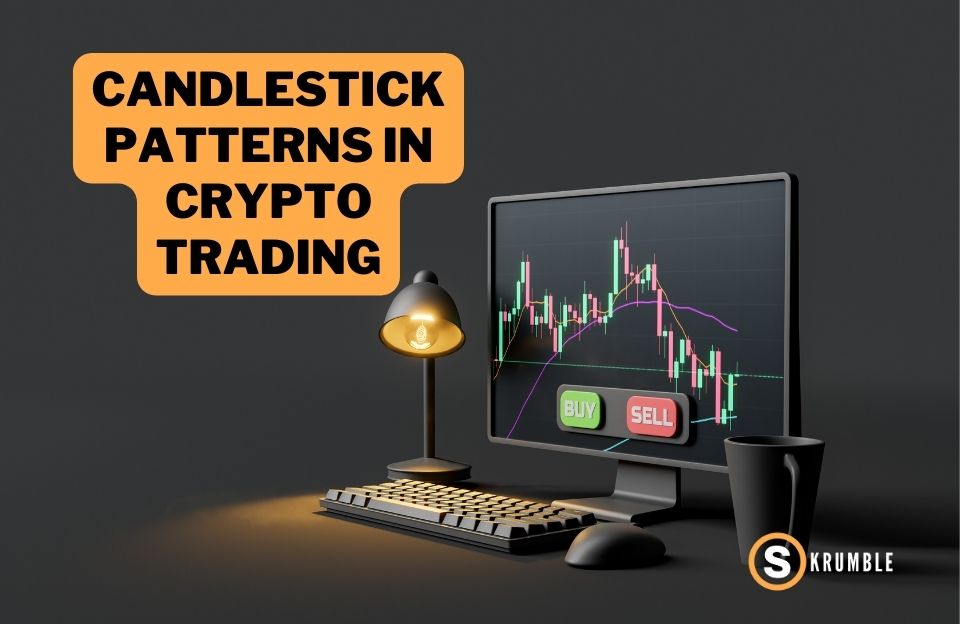- Home
- /
- Guides
- /
- Intermediate
- /
- Price Action Trading Strategies:...
Price Action Trading Strategies: How they work and their benefits
Swen Keller

Price action trading offers several benefits for traders who prefer a more intuitive and chart-driven approach to analyzing and making trading decisions. Price action trading is a type of trading practice where price action traders make decisions based on the evolution of the price of securities.
Instead of using the indicators you receive from technical analysis to determine strategies, price action traders believe they can get the necessary market information through a thorough price analysis.
In this article, we will explain price action trading, how it works, and all the different aspects of its inner workings. We will cover all the benefits that come from this practice and the drawbacks you might have to face. There will also be a discussion on the best trading strategies.
What is Price Action Trading?
Action trading is a trading discipline that comes from making your trading decisions with the help of a stripped-down price chart. This leads to removing any indicators from complex, lengthy, and time-consuming technical analysis which tends to slow you down.
In contrast, price charts are increasingly being used to showcase the data generated in a financial market over a particular period. The charts help reflect the expectations of all the market participants involved in trading at a given moment, displaying the trend direction in the form of price action.
Despite the fact that major world news events and economic data have a considerable impact on price changes in the market, it is not actually necessary to collect, research, or evaluate them in order to correctly predict the market structure. Rather, this can be easily and quickly reflected through the price action.
As price action can easily express all the variables impacting a market, the use of lagging indicators you would use as traditional trading strategies has been replaced by the former. Price movements, hence, can give all the signals you need to cultivate a lucrative and high-probability system.
Price Chart Types

Price action trading charts can be interpreted as statements on the conditions of the larger financial market. These chart types serve as the language of the charting system and give you all the information about possible trading strategies. This is how they create the basis for price action. We will discuss the most well-known charts in this section.
Candlestick Chart
Displayed through candlestick-like shapes, these charts are the leading form of presenting price movement on a crypto exchange. Patterns emerge as the price rises and falls. The formations can seem random at first, but they give a price action trader all the vital information they need.
These formations represent the open, close, high, and low ranges of prices for a specific trading session. The body of the candlestick indicates the price range captured between the start and end of a trading session.
By default, a black or red candlestick shows that a price closed lower than its start point. A green, blank, or white candlestick means that the price closed above the point it started initially.
At the start of a crypto trading session, the appearance of a candlestick marks the opening price. The closing price is expressed by the last price traded before another candlestick’s appearance. The highest and lowest points represent the most significant price jump and the most dramatic drop, respectively.
Bar Chart
A bar chart, as the name implies, is presented with the use of bars. It consists of price bars that highlight changes in price across a specific period. The bar also represents the highest and lowest prices, along with the opening and closing prices for that particular period.
The opening price is shown by the horizontal foot on the left side of the bar. Subsequently, the flat foot at the right side of the bar depicts the closing price. The bottom of the bar shows the lowest price reached, while the top represents the highest price.
Line Chart
Lines in the line charts connect successive price data points. It will also show any market changes by drawing a line between the two consecutive closing prices. Line charts make it easier to determine the support and resistance levels. You can cut off unnecessary market noise without any difficulty. One of the pitfalls of line charts, however, you might need help interpreting them for day-to-day trading.
Price Action Trading Patterns

Two primary chart patterns, continuation and price action reversal chart patterns, can develop in the market, informing traders of which strategies they should follow.
Continuation patterns appear during a trend. Assume that the movement is upward, and that forms a triangle. Since the trend is up, the price has a slightly larger possibility of price breaks to the upside. When a pattern appears during a downtrend, the same logic applies. The technique here is to wait for a trend to build, then for a pattern to form, and then to trade only if the price breaks out of the pattern in the trending direction.
When the rules of an uptrend or downtrend are broken, price action reversals occur. The trend is doomed if one of these guiding principles is violated. If both rules are discarded, the trend will reverse, depending on the waves being observed.
Consider an uptrend with higher swing highs and lows. When it swings lower than normal, that serves as a warning indicator. If the price reaches a lower swing high, it indicates a reversal is in progress. This is not to say that things cannot reverse, allowing the uptrend to resume. The evidence simply suggests that a reversal is likely to happen.
Price Action Trading Strategies

These trading patterns are also called price action signals. Many traders consider them to be the most important signals involved in price action trading. These chart patterns offer the price action traders an accurate picture of the subsequent patterns for a successful price action analysis.
Let’s look at some chart patterns to implement for successful trading. We will also discuss more extensive price action strategies along with these patterns.
Inside Bar Pattern and Pin Bar Pattern

Traders can use inside bar patterns and pin bar patterns to discover potential continuation in trends or their reversals regarding the changes in the price of a currency pair. The inside bar pattern is a trading strategy based on a two-bar pattern system. This consists of the inside bar and the previous bar, usually called the mother bar.
The mother bar will contain the entirety of the inside bar within its high and low range. This is primarily used as a breakout pattern in a market. Still, if it forms at the critical chart level, it can be traded as a reversal signal.
The fakeout pattern is a subtype of the inside bar pattern. It is a false break in the bar pattern. If a bar pattern undergoes a break for a short duration and returns within the previous range, it is considered to be a fakeout pattern. This pattern was given its name because it deceives you into thinking the market trend lines are moving in a certain direction before abruptly changing to the opposite direction
This type of price action setup gives you an idea of the possibility of price returns in the market or its rejection altogether. The pin bar pattern works well in developing and range-bound markets or can be utilized for counter-trend trading from key resistance or support levels. The pin bar position dictates that a price will move in the opposite direction to the tail. The tail itself displays a possible reversal or rejection of the price.
Support and Resistance Level in Price Action Trading Strategies

These horizontal price levels connect the price bar highs to the high and low levels of other price bars. A support and resistance level is created when the price action of the market shifts in the opposite direction. This leaves behind a peak or trough, referred to as the price swings. These levels will secure the trading ranges. They are also present in trending markets when they undergo retracing.
A trading range is an area that is present between the parallel resistance and support levels. Prices usually stay within these ranges, with very few cases breaking their boundaries. The resistance level is depicted as a similar line close to the high price point, while the support is shown as the line representing the lowest price for that particular period.
As soon as the market performs better than the existing trend lines, the old peaks will take on the role of support as the price breaks past them and then falls back to test them. When it comes to a downtrend, the old troughs will now become the resistance level as the price drops below them to rise back up to test them eventually. This price action trading strategy allows most traders to determine where an asset’s price has historically found support or resistance at certain key levels. These levels may serve as possible trading entry or exit points. The resistance and support levels are calculated through moving averages.
Head and Shoulders Pattern
Another popular price action strategy chart used by many technical traders today to predict the bearish-to-bullish reversal of trends is called the head and shoulders pattern. These chart patterns are formed by three peaks that have a common baseline. The outer two peaks of the head and shoulders pattern are similar in height, while the middle has the highest peak.
The pattern is created when the market price rises suddenly, followed by a fall to the level of the previous rise. The price then experiences a more significant rise than the previous trend, hence, forming the head of the pattern and eventually declining to the baseline. This is repeated a third time to the height of the first wave, thus, completing the pattern.
Island Reversal
Traders use the island reversal action trading strategy to catch any developing price reversals. This phenomenon takes place when the gap between the prices of currency pairs increases or decreases accordingly. This creates a gap in the chart with a subsequent gap in the other direction. The gap may result from a significant difference between the price of the currency pair at the opening of a prolonged trade to its closing historical prices.
If the currency pair’s cost starts to deviate from the current market price range towards the first gap, it signals you to enter a long position. Other traders experiencing a deviation toward the downside of the market range are advised to enter a short position. You can put a stop-loss order below the current price in a long position and above the range in case of a short position. This strategy will help you reduce the overall risk.
Price Action Swing Trading

The next strategy is price action swing, which focuses on making smaller gains in short-term trends while eliminating losses as quickly as possible. The benefits may be small, but when combined over time, they can add up to quite good yearly returns. Swing traders often look for trade setups on hourly, 4-hour, and daily charts, while they may employ 15-minute or 5-minute charts for improving their market entrance. Traders will use the existing trend on the various price action trading charts when they need to short their investment.
Scalping in Price Action Trading
A type of trading strategy where the trades have a duration of a few minutes and involve taking profits or losses as quickly as possible, scalping in forex trading is based on the use of a three to ten-pip stop loss with a five-to-ten-pip target.
This price action strategy in the share market landscape involves risking some cents a share to make more money. This price action strategy requires rapid trade entry and exit from a position to take advantage of small price movements. Scalpers will primarily make use of minute-long charts.
The scalping action trading strategy focuses on following the direction of the trend, and traders enter a position on pullback when the price shifts back toward the trend direction. Candlestick engulfing patterns are often referred to for this course of action. It occurs when a candle engulfs a candle in the pullback direction in the trend.
Using Price Action Trading Strategies

A price action trading strategy is used in many ways to make educated decisions regarding entering, exiting, and managing a trade. Price action traders will identify particular price action patterns, such as the inside bar or pin bar patterns, to determine where to enter a trade. This is because a price action strategy will reveal breakouts, reversals, or continuations.
Price action analysis can help to confirm the findings of other forms of technical analysis. Suppose the conclusions from this financial instrument correspond to other analyses. In that case, it will give traders even more confidence in their actions. Traders will also keep monitoring the price movements throughout the progress of their trade. Such as tracking a currency pair.
Any chance of reversals or a slowing momentum can be spotted using price action trading strategies in advance. This way, traders can exit their trade before they experience any dramatic drops and eventual losses. Price action also lets individuals adapt their strategies to evolving market conditions. They can adjust their action plan for more significant swings in times of greater volatility.
Stop-loss orders can also be based on the identified resistance and support levels. This offers protection if the trade suffers a negative shift. Take-profit orders are selected through price action, aiming for the right resistance level.
With the help of the high-probability setups of price action, traders can bypass reckless trading practices and select trades that don’t match their strategies. You can determine the capability of a price movement by analyzing price action and volume patterns. Traders will try finding volume patterns corresponding to reversals and price trends.
Forex Price Action Trading

Utilizing trade price action in the forex market is based on the same principles as stock trading opportunities. Supply and demand requirements are present in both markets, which means that these trading strategies let you measure the market’s price movement changes using charts, price momentum, and volume readings. The technical indicators in forex trading are also removed for price action apart from fundamental price action indicators, such as moving averages, to determine support and resistance areas and the direction of the trend.
Price Action Crypto Trading
In cryptocurrency trading, trading price action can be especially relevant and practical. In comparison to regular financial markets, cryptocurrency markets are recognized for their high volatility and the availability of little historical data. As a result, price movement analysis is a crucial tool for crypto traders who want to make informed judgments.
Many cryptocurrency traders use short-term trading strategies, including day trading and scalping. Price action analysis can provide immediate and actionable signals for short-term transactions in turbulent crypto markets. News and events impact cryptocurrency prices, and price movement patterns can assist traders in analyzing market sentiment and responding to breaking news.
Advantages of Price Action Trading Strategies
Price trading comes with multiple benefits for traders. Action traders will give you an advantage in real-time trading due to the removal of lagging indicators that can slow you down. Price action is based on price movements and, in some cases, volume patterns. These chart patterns are easy to understand even for retail traders because of the presence of only one variable to focus on. Day trading can take advantage of this as well.
A comprehensive understanding of where to plot resistance and support levels makes trading price action very simple and easy to use. Other strategies involve looking at multiple variables and deciding where to place the buy and sell orders, which can become very challenging. This can prove to be a significant hurdle for those just starting in the field. Traders can also get overwhelmed by the existence of multiple factors and make the wrong decisions. Using price action, hence, reduces the chances of any analysis paralysis.
To evaluate the effectiveness of price action tactics, numerous backtests have been performed. Simple setups such as trends, support, and resistance have been running for numerous years without significant delays or sudden stops. These practices provide a consistent environment for successful trading.
Price action practices are primarily used in day trading. The higher volume of trades leaves little time for a detailed analysis. The use of price action makes it possible to make your trading decisions with lesser input. These strategies accurately represent possible entrance and exit points because of the existence of well-defined supply and demand zones.
Disadvantages of Price Action Trading

With all the advantages offered by price action strategies, there are also some drawbacks one should be aware of. Price action will display different signals with changing time frames. This needs to be clarified for traders. When analyzed at other times, a stock or security can show an increasing price trend or a sudden reversal in price.
You might only sometimes get the correct signal from the price action chart patterns. False signals can lead to losses for traders if they cannot quickly identify them, even if this is rare. This process can also be challenging to automate due to the absence of indicators and other dynamic analysis techniques. The analysis of charts for price action can differ for different traders due to its subjective nature. A lack of proper experience can make traders vulnerable to mistakes when finalizing trading decisions.
Compared to trading with standard indicators, price action offers fewer trading opportunities. Traders often have to wait long to find the proper time or opportunity for a successful trade. Patterns also require time to form valid signals and for a trade to reach a particular level before it can be executed. This means that traders must practice a lot of patience and avoid making rushed decisions to get the best outcomes.
Conclusion
Price action trading allows traders to benefit from small or sudden changes in price movement just by observing the price chart. It reduces the time to reach trading conclusions and allows them to adjust to a rapidly changing environment. However, by focusing only on price charts, they run the risk of missing important indicators and signals that have a big impact on the price.
Once you have a greater understanding of this approach, how it works, and the different strategies involved, you can develop a keen sense of market dynamics and market psychology, and interpret market trends and patterns. Traders should combine price action techniques with proper risk management and a solid trading plan to increase their chances of success in the markets.

FAQ
Most frequent questions and answers
Yes, this trading practice is a well-known and effective method that focuses on constantly monitoring market movements and patterns. It is adaptive, focuses on market sentiment, and is particularly beneficial in volatile markets. However, it can be subjective, requires certain skills, and does not guarantee prediction accuracy.
The best day trading price action approach often leverages intraday patterns such as breakouts, pullbacks, and reversal formations. Incorporating resistance and support levels, trendlines, and watchful volume analysis tools can provide significant insights for day traders attempting to negotiate the market’s volatile price changes-especially when day trading. Only those who understand the market well should enter into day trading.
This type of trading entails a variety of circumstances in which traders make decisions based on the price movements of an item. Examples are identifying candlestick patterns like engulfing and pin bars, using trendlines for bounce trades, trading breakouts, recognizing formations such as double tops or inside bars, and analyzing price movements at support and resistance levels. Traders use these patterns in conjunction with technical analysis to execute trades while keeping risk management measures in mind.
While no “most accurate” price action pattern exists, several patterns are recognized for their consistency in indicating impending market movements. Remember that accuracy depends on various factors, including the context of the pattern, overall market circumstances, and the trader’s expertise. On the other hand, engulfing patterns, pin bars, and double tops/bottoms are all recognized patterns that often provide reasonable predictions of impending price movements.
Skrumble.com provides all its content for informational purposes only, and this should not be taken as financial advice to buy, trade, or sell any investment instruments or products, including but not limited to cryptocurrencies, or use any specific exchange. Please do not use this website as investment advice, financial advice, or legal advice, and each individual’s needs may vary from that of the author. Investing in financial instruments, including cryptocurrencies, carries a high risk and is not suitable for all investors. It is possible to lose the entire initial investment, so do not invest what you cannot afford to lose. We strongly advise conducting your own research before making any investment decisions. This post includes affiliate links with our partners who may compensate us.
To view our privacy policy read here.






